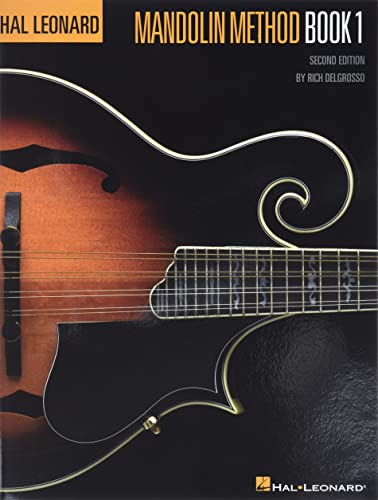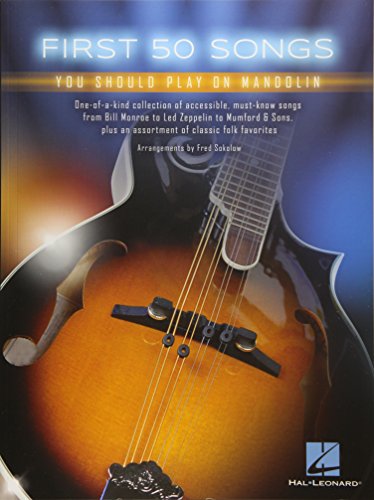If you have an interest in learning the bouzouki and/or the mandolin, this article is for you.
The mandolin and bouzouki are quite similar, but differ mainly in terms of the shape, strings, sound, and octaves.
Before you start learning how to play either (or both!) of these instruments, it’s well worth it to carefully study some of their differences. It might be best for you to start up with the one that is easier to learn.
Table of Contents
- The Differences Between The Mandolin and Bouzouki
- Is the Mandolin or Bouzouki Easier To Play?
- Conclusion
- FAQs
The Differences Between The Mandolin and Bouzouki
Mandolin and Bouzouki Strings
There are two types of bouzouki, one with three pairs of strings (or “courses”), which is referred to as trichordo. The other kind of bouzouki has four courses or pairs of strings, and it is known as tetrachordo.
When the steel strings are plucked, they create a sharp metallic sound close to what you may hear coming from a mandolin, but with a lower pitch.
[PRO TIP: Find a set of bouzouki strings that have strong tones from bottom to top. This set from D’Addario fits the bill.]
Mandolins have 8 strings arranged in 4 courses, just like the tetrachordo bouzouki. Mandolin strings are made of alloys of phosphor and bronze. The type of alloy determines the quality of the string, and the sound produced.
[PRO TIP: When it comes to strings, you can usually trust the bestsellers. This set of mandolin strings is D’Addario’s bestselling set.]
The different materials that make up the strings for these two instruments make them have varying versatility for different types of music and intended tones.
Tuning a Mandolin or Bouzouki
The “standard” mandolin has a 14-inch scale that is tuned GDAE, all paired in double courses. For the bouzouki, the scale length is commonly around 25 inches, and it’s tuned an octave below the mandolin.
Double coursed as well, the bouzouki has the bottom two string pairs in octaves like a 12 stringed guitar, with the upper strings in unison. (Learn more about guitars and mandolins.)
An octave mandolin tuned GGDDAAEE, which comprises a 21 or 22-inch scale, is also an octave below a typical mandolin.
Although both the bouzouki and the mandolin are tuned similarly, the technique of playing them is different, because their scales are not the same.
With the mandolin, each finger plays two frets, but with the bouzouki, every finger plays only one fret.
This is probably a good time to mention – whichever of these two you choose to go with, remember to pick up a good tuner as part of your “purchasing checklist.” It’s a necessity that can be easy to forget for beginner players.
[PRO TIP: Find a good multi-instrument tuner that can clip-on to multiple instruments easily, and you won’t have to break the bank and buy additional tuners down the road. This multi-instrument tuner fits that bill.]
Mandolin and Bouzouki Construction
From the construction point of view, different bouzouki vary not only in the number or types of strings, but also in other features like width, height, neck length, and other parts of the body.
This construction variation is determined by experienced manufacturers who want a particular tone or sound.
With any resonating body, the timbre is determined by the type and size of the body, while the neck length and strings determine the pitch of the sound produced by the instrument. To some degree, the neck length and strings influence the timbre too.
Most bouzouki has 25 to 27 spaced frets, on a chromatic scale, with 12 tones of equal temperament.
[PRO TIP: Spend the bit of extra money for a hardshell case to get much better protection. This hardshell bouzouki case is a bestseller for a reason.]
Mandolins being necked box lutes, they come in two main types that include curved top mandolins and flatback mandolins. The strings on a mandolin are suspended over the soundboard and the neck, then pass over a floating bridge.
The bridge remains in contact with the soundboard due to downward pressure exerted by the strings. The neck of a mandolin can either be flat or have a slight curvature. The action of the strings causes the vibrations that produce the sound.
[PRO TIP: Don’t skimp on the protection for your mandolin either. This case comes with a cool retro denim look.]
For the new players out there – remember to PROTECT those instruments! Don’t forget to scoop up a case when you’re making your first mandolin our bouzouki purchase. For every player out there, there will come some time when you’re glad you had it – we’re talking from experience here.
Holding and Positioning The Mandolin and Bouzouki
(This information on holding the mandolin or bouzouki is for the right-handed instrument and right-handed player; left-handed players will need to reverse the instructions.)
Holding a bouzouki can be a bit of a challenge, due to its round, smooth back that is easy to slide around.
You should play bouzouki seated down, with your right foot raised around 15 cm, and your left foot on the ground. Rest the instrument on your lap while the neck extends upwards and to the left at around 30 degrees.
When playing the mandolin, you should sit upright with the instrument resting on your lap at around 45 degrees. The instrument’s neck should cradle between the index finger and the thumb. Your palm should be close to the neck and back.
How Much do Mandolins and Bouzoukis Cost?
The cost of a mandolin and a bouzouki can vary widely depending on factors such as brand, materials, and craftsmanship. Generally, bouzoukis tend to be more expensive than mandolins due to their larger size and more complex construction. However, the cost of both instruments can range from a few hundred dollars to several thousand dollars, so it’s important to consider your budget and needs when choosing between them.
With these price considerations, sometimes the bouzouki is not the ideal first choice for beginners looking to select one of these instruments. If you’re trying to decide the best instrument to learn first, it’s probably advisable to go for the mandolin, which you can often buy for significantly cheaper than the bouzouki.
Origins of Mandolins and Bouzoukis
The bouzouki is a long-necked plucked lute with its origins in Greece. Around 1950, the tetrachordo bouzouki started to gain in popularity, with the trichordo bouzouki becoming more popular a bit more recently.
The bouzouki, also spelled as “buzuki,” was traditionally an instrument for playing during social gatherings.
Just like the bouzouki, a mandolin is also a plucked instrument that has roots in Europe, with predecessors including the gittern, mandola, and mandora.
Is the Mandolin or Bouzouki Easier To Play?
Although the mandolin may sound a bit too bluegrassy for some, and is a bit hard to press on the frets, it is generally easier to play than bouzouki.
The Bouzouki has long, stretched frets, mainly in the Greek style, which makes it hard to play (though many would say this makes it sound better). The mandolin’s shorter neck means its frets are closer together.
Whichever one you choose, a good songbook is ALWAYS the way to go when you’re picking up a new instrument. Here are a few we’d recommend for each instrument.
Mandolin
- Music book contains these mandolin songs:
- Series: First 50 Format: Softcover Arranger: Fred Sokolow Inventory #HL 00155489 ISBN: 9781495056635 UPC: 888680600495 Width: 9.0″ Length: 12.0″ 112 pages
Bouzouki
- Richards, Tobe A. (Author)
Click here to learn how hard it is to play the mandolin.
Conclusion
You can probably tell that both the bouzouki and the mandolin are great instruments, with a good bit in common.
However, with some key differences, it’s easy to point out the mandolin as the easier of the two to play. Not to mention it’s often also the more affordable choice, which tends to strengthen its “beginner-friendly” case even more.
Learn about the differences between the ukulele and mandolin here.
So, all in all, we’d probably recommend that you start learning the mandolin first. Then, you can make a smooth switch to learning the bouzouki down the road if you’re so inclined. Again, the reasoning here is that the mandolin is often just simply more affordable and easier to play.
FAQs
What is a mandolin?
A mandolin is a stringed musical instrument that typically has eight strings in four pairs and is played by plucking or strumming the strings.
What is a bouzouki?
A bouzouki is a stringed musical instrument that is played mainly in Greek music and has a pear-shaped body and long neck with metallic strings that are plucked or strummed.
How do mandolins and bouzoukis differ in sound?
Mandolins have a bright and crisp tone, while bouzoukis have a deeper and warmer tone.
Are mandolins and bouzoukis played differently?
Yes, mandolins are typically played using a different technique than bouzoukis, with mandolins being played using quick and intricate picking patterns, and bouzoukis being played using strumming patterns.
Are mandolins and bouzoukis used in different types of music?
Yes, mandolins are used in a wide range of musical styles, including bluegrass, country, and classical, while bouzoukis are primarily used in traditional Greek music.
What is the history of the mandolin?
The mandolin has a long history that can be traced back to ancient Greece and Italy, where it was used in classical music and folk music.
What is the history of the bouzouki?
The bouzouki has its roots in ancient Greece, but it was modernized in the 20th century and became a staple of traditional Greek music.
Are mandolins and bouzoukis expensive instruments?
The price of a mandolin or bouzouki can vary depending on the quality and brand, but they can be expensive instruments, with high-end models costing several thousand dollars.
Are mandolins and bouzoukis difficult to play?
The difficulty of playing a mandolin or bouzouki depends on the individual player’s skill level and experience, but both instruments can be challenging to master.
Can beginners play mandolins and bouzoukis?
Yes, both mandolins and bouzoukis can be played by beginners with proper instruction and practice, but they may require a significant amount of time and effort to learn.








